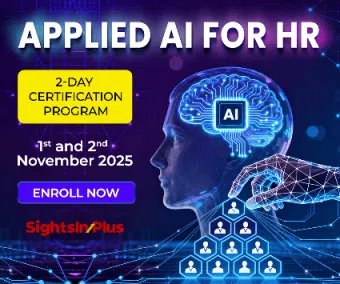There’s a moment in every AI implementation story where the gleaming promise meets the messy reality of human nature. I witnessed it firsthand when our company decided to bring a conversational AI agent into our recruitment process. It was an open-source solution that we believed would simplify our interview process.
The decision seemed logical at the time. We were scaling rapidly, struggling to maintain consistency across our interview processes, and hence our dev team repurposed the AI agent according to our requirements. it could conduct preliminary interviews, ask standardized questions, and evaluate responses objectively.
We Misunderstood the Need for Recruitment Efficiency.
The AI-powered interview agent we customized promised to solve a lot of our problems, But as we rolled out our shiny new AI interviewer, the cracks began to show almost immediately. Candidates who were perfectly qualified started switching between languages mid-interview—something our AI couldn’t handle gracefully.
The system excelled at analyzing words and responses but completely missed the nuanced personality traits that often determined success in our collaborative environment. Most troubling of all, we discovered that resourceful candidates were quickly learning to game the system, crafting responses that triggered positive algorithmic responses while revealing nothing about their actual capabilities.
The irony wasn’t lost on anyone in the room during our post-mortem meeting. Here was a company that had invested heavily in AI to “streamline hiring” and “eliminate inconsistencies,” only to discover we’d created new biases while missing the very human elements that made great hires great. It’s a story that’s becoming depressingly familiar across the landscape, and it reveals a fundamental misunderstanding about what AI can—and cannot—do in the delicate ecosystem of human resources.
The promise of AI in HR is intoxicating. Imagine systems that can sift through thousands of resumes in seconds, conduct preliminary interviews without human fatigue, and eliminate the scheduling nightmares that plague recruiting teams. It’s the kind of efficiency-meets-consistency narrative that makes executives reach for their checkbooks faster than you can say “disruptive innovation.”
But here’s the uncomfortable truth: most AI-driven HR initiatives fail spectacularly, often causing more harm than the problems they were designed to solve. After living through our own AI recruitment experiment and observing dozens of similar implementations, I’ve identified five critical red flags that signal an AI HR project is heading toward disaster. These aren’t technical glitches or budget overruns; they’re fundamental misunderstandings about the nature of work, humanity, and the role technology should play in bringing them together.
Red Flag #1: The Data Delusion
The first red flag appeared when we realized our AI interviewer was learning from our historical hiring decisions—decisions that reflected our unconscious biases rather than objective measures of success. It was like training a system on a map of our comfort zones and calling it a pathway to better hiring.
Our conversational AI had been trained on transcripts of successful interviews conducted by our best recruiters. The algorithm dutifully learned that certain communication styles, specific technical terminology, and even particular ways of structuring responses correlated with positive hiring outcomes. What it actually learned was how to identify candidates who sounded like our existing team, creating a feedback loop that would have impressed any echo chamber architect.
The tragedy became clear during our multilingual interview attempts. When candidates naturally switched between languages—often a sign of diverse thinking and cultural adaptability, qualities we claimed to value—our AI struggled to maintain context and often marked these interactions as “inconsistent” or “unfocused.”
This is the data delusion at its most insidious also affected our sales call analyzer agents too. We treat historical data as truth rather than a record of past limitations.
How many innovative perspectives were eliminated because they communicated differently than our training data suggested they should?
Should you solution abandon past data? No of course not, let’s interrogate it ruthlessly. Leaders must ask: The fundamental issue is we’re optimizing for the wrong outcomes entirely. Instead of building AI systems that predict who will succeed based on past patterns, we need systems that identify who can adapt and grow into roles that may not even exist yet.
To be specific the practical implementation would be to focus on rethinking success metrics. Maybe it will also require building AI that evaluates on the basis of real time problem-solving. The data delusion breaks when we stop using yesterday’s success patterns to predict tomorrow’s needs.
Red Flag #2: The Human Touch Paradox
The second red flag emerged when we discovered that our AI’s greatest strength—consistency—was also its greatest weakness when it came to understanding human personality and potential.
I remember the moment this became crystal clear. Our AI had just conducted an interview with a candidate who gave textbook-perfect answers to every technical question. The system rated the interaction highly, flagging the candidate as an excellent fit. But something felt off to the human recruiter who reviewed the transcript. The responses were polished, almost rehearsed, lacking the authentic enthusiasm and curiosity we’d seen in our best hires.
Meanwhile, another candidate had stumbled through some technical questions, pausing to think out loud, admitting uncertainty, but showing genuine problem-solving instincts and asking insightful questions about our company culture. Our AI marked this as a weaker performance due to the hesitations and less polished responses.
This is the human touch paradox in action: the more we tried to eliminate subjective human judgment from our interviews, the more we needed human wisdom to interpret what the AI was actually measuring. Our system could analyze word patterns and response structures, but it couldn’t detect authenticity, curiosity, or the spark of genuine interest that often separates great hires from merely adequate ones.
The organizations that succeed with AI in HR learn to amplify human judgment not eliminate it. They use AI to handle the routine screening and pattern recognition, then rely on human wisdom to evaluate the qualities that actually matter: character, potential, cultural fit, and the intangible elements that make someone not just competent, but inspiring to work with.
Red Flag #3: The Engagement Theater
The third red flag appeared when we realized our impressive AI metrics were masking fundamental problems with our interview process itself. We were measuring efficiency while ignoring effectiveness.
Our dashboard looked fantastic. We could show executives colorful charts demonstrating how our AI interviewer had reduced time-to-first-interview by 60%, increased candidate response rates, and created “objective” scoring metrics for every interaction. What these metrics didn’t show was that we were actually creating a worse candidate experience while missing crucial insights about fit and potential.
Candidates reported feeling like they were talking to a sophisticated chatbot rather than engaging in a meaningful conversation about their career aspirations. Our AI could ask follow-up questions based on keyword triggers, but it couldn’t pursue an interesting tangent or explore an unexpected strength that emerged during conversation. We were optimizing for measurement rather than genuine human connection.
This is where AI in HR initiatives often become exercises in looking productive rather than being effective. Organizations become so focused on quantifying their processes that they forget to evaluate whether those processes are actually serving their goals. They track interview completion rates while missing the nuanced insights that come from authentic human dialogue.
Red Flag #4: The Compliance Trap
The fourth red flag emerged when we discovered that candidates were learning to game our system, turning our “objective” AI interviewer into just another test to be cracked rather than a genuine evaluation tool.
Within weeks of deployment, we started noticing patterns. Certain phrases and response structures were appearing with suspicious frequency across different candidates. There are online forums that have emerged where people share strategies for “acing AI interviews,” complete with keyword lists and response templates.
The compliance trap is tempting because it offers the appearance of objectivity and fairness. Our AI asked every candidate the same questions in the same way, scored responses using the same criteria, and generated seemingly impartial evaluations. But fairness isn’t just about equal terms is it? it’s about equitable outcomes, revealing true potential.
We discovered that some of our best potential hires were being filtered out. Did they lack ability, I don’t think so. Maybe they just didn’t know the “rules” of AI interview optimization.
True AI-driven equity requires systems that understand when they’re being gamed and can adapt accordingly. It means building AI that doesn’t just measure responses but understands the intention and authenticity behind them.
Red Flag #5: The Innovation Illusion
The fifth and perhaps most dangerous red flag appeared when we realized we’d confused technological sophistication with genuine problem-solving, implementing an impressive system that didn’t actually address our core hiring challenges.
The wake-up call came during a team retrospective. Despite our AI’s impressive capabilities and metrics, we were still struggling with inconsistent evaluation criteria, lengthy decision-making processes, and difficulty identifying candidates who would thrive in our specific culture and role requirements.
Our conversational AI could conduct interviews, but it couldn’t tell us whether someone would be a collaborative team player or an innovative problem-solver. It could process multiple languages when prompted, but it couldn’t navigate the cultural nuances that made communication effective in our diverse workplace. It could detect when candidates were gaming the system, but it couldn’t distinguish between strategic thinking and superficial optimization.
No amount of algorithmic sophistication can replace clear role definitions, well-trained interviewers, or a hiring process designed around actual job requirements rather than convenient metrics.
The organizations that succeed with AI in HR understand that technology is an amplifier. Let’s use AI to enhance our existing strengths rather than mask our fundamental process weaknesses.
The Path Forward with AI in Human Resources
Do we want to force your hand to choose between the cold efficiency of AI and the warm messiness of human judgment? I don’t think so.
Our experience taught us that the future of AI in HR is about collaboration. We’ve since redesigned our approach to create a system that combines the consistency and availability of AI with the contextual wisdom and emotional intelligence of humans.
Organizations can self-host our platforms in their own environment, gain complete customization capabilities. It is a small pivot from our idea to provide an ideal solution, but it gives control to you, who understand an industry, a process, a workflow better than us.
However, we won’t close the curtains there; we will provide support. Help you understand that implementing AI in HR needs humility, recognizing that the goal makes human judgment more informed, more consistent, and more effective. We understand that the most sophisticated algorithm is still just a tool, and like any tool, its value depends entirely on the wisdom and intention of the person wielding it.
As we stand at this crossroads between human intuition and artificial intelligence, the red flags I’ve outlined are invitations to do better.
Note: We are also on WhatsApp, LinkedIn, Google News, and YouTube, to get the latest news updates. Subscribe to our Channels. WhatsApp– Click Here, Google News– Click Here, YouTube – Click Here, and LinkedIn– Click Here.



